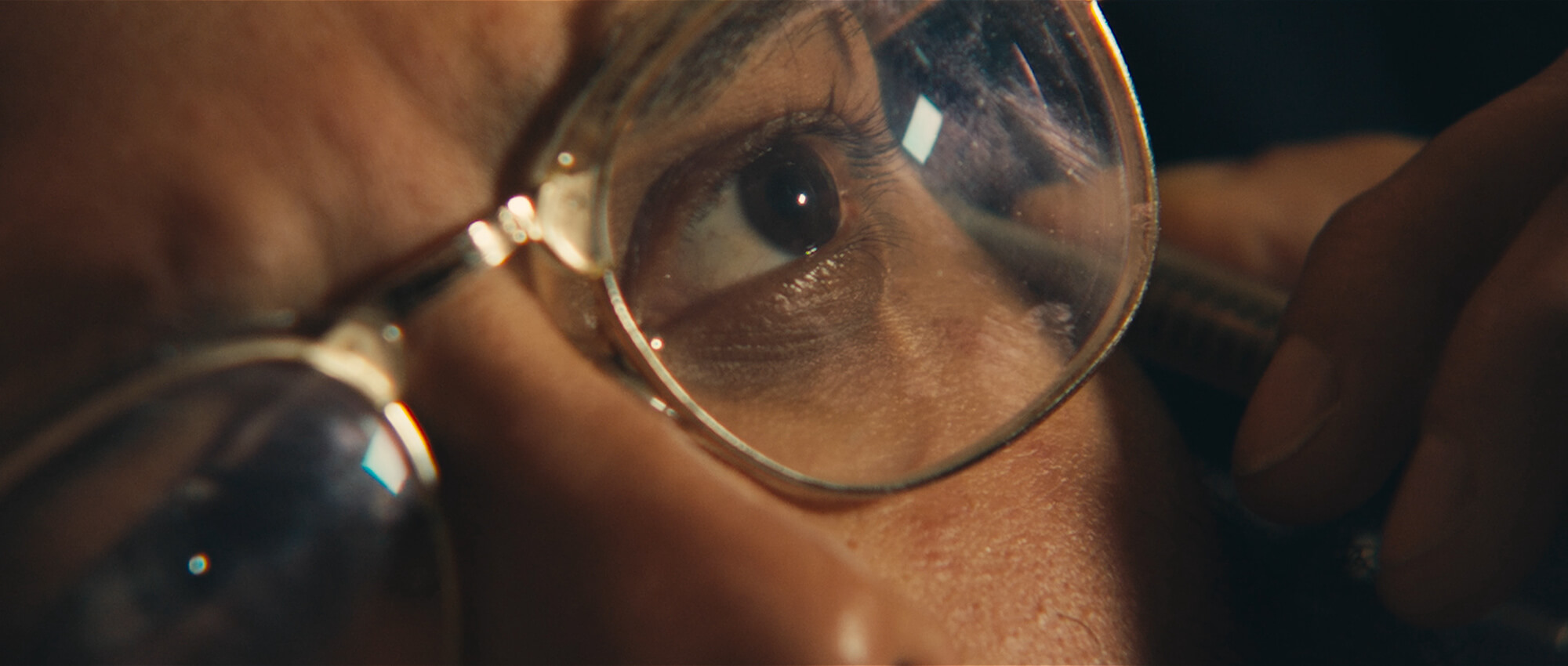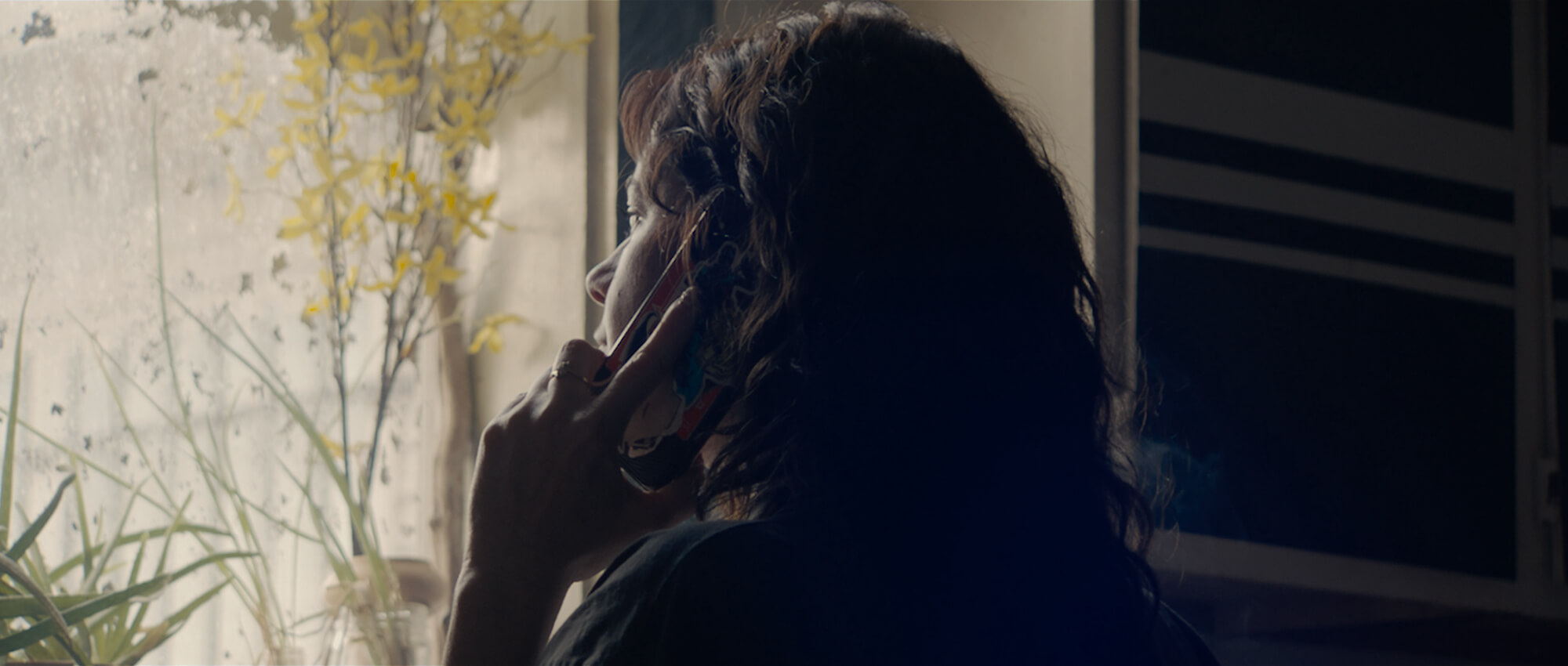
The last year has affected us all in numerous ways both mentally and physically. An overload of time spent indoors has only exacerbated our weirdest tendencies tenfold. Paavo Hanninen, who we last spoke to for another two-hander The Heart Wants What It Wants, captures this strange sense of isolated paranoia with his latest film I Think I’m Dying – a tale of two ex-lovers who decide to reconvene after a bad first date when one of them is convinced that they’re going to die. It’s a darkly hilarious take on the effect of isolation mixed with an unhealthy dose of hypochondria. DN discussed making the short with Hanninen who revealed how his own worries informed its genesis and how, by mapping out a 3D model of his entire house, he was able to cinematically storyboard and create a Covid-safe production.
What brought you to this idea of two isolated, paranoid individuals reconnecting during quarantine?
If you spend any time looking at hypochondria forums, a recurring commonly held fear is that of Naegleria fowleri, better known as the brain-eating amoeba. Scientists estimate that there are billions of these microorganisms in the freshwater bodies of North America, where N. fowleri is endemic, and we encounter these organisms millions and millions of times every year, completely harmlessly.
The name and the danger of this organism come from a very particular set of circumstances. If while in a still or near still body of water on a very hot day where the water temperature is above roughly 85 degrees Fahrenheit you manage to stir up the sediment on the floor and the water enters your nostrils with great force, managing to flood your sinus cavities, then it is possible that some of that water may have contained a free floating N. fowleri specimen triggered to mutate to the next stage in its life-cycle by the rising water temperature. Most researchers believe that even if these events occur, the odds of the amoeba then continuing its journey to your brain are infinitely small. There have only been 145 known infections from 1962 to 2018. 145 infections out of hundreds of millions of exposures to freshwater amoeba habitats, not to mention probably millions of incidences of water filling nasal passages.
The reason, however, that this organism is a perennial favorite of hypochondriacs is the fact that out of those 145 people, only four have survived. Once symptoms begin as a result of the amoeba’s journey, you get a loss of the sense of smell that transforms into headaches and fever and then into hallucinations, delirium and a cessation of motor function as the amoeba devours your neurons until you slip into a coma and die. Unfortunately for one’s sanity, it can take up to nine days after exposure for these symptoms to begin.

Twice I have convinced myself that I have contracted the brain-eating amoeba. The second of which was this past summer, during the height of the Covid. After having been cloistered inside for months, my girlfriend and I decided to get out of New Orleans and go on a Covid-safe, socially distant trip to canoe in a state park about an hour away. While paddling through a shallow, stagnant portion of the lake, our canoe drifted near a cypress tree where a banana spider had built a massive web. As my head neared the spider web, I ducked to the side in an effort to avoid it, capsizing our canoe. We and all of our stuff tumbled into what was effectively putrid swamp water. We recovered our items and canoed back to the dock soaked. We had fallen into prime amoeba habitat. I was convinced that at least one of us was doomed.
After I emerged from this nine day anxiety bender, I realised this was all pretty ridiculous and was like, man that would have been a horrible first date.
Luckily, the science had been updated and I only spend nine days restlessly Googling and re-Googling and checking my temperature and smelling onions and vinegars to make sure I was fine, activities that I was already doing obsessively due to Covid. My efforts were merely intensified. After I emerged from this nine day anxiety bender, I realised this was all pretty ridiculous and was like, man that would have been a horrible first date. This is how the idea for I Think I’m Dying was born.



How did you transition that fear into the script that you would go on to shoot?
Right before Covid struck and everything shut down, we made a different short film titled Ghost Girl, that was shot on 16mm, cost a lot of money and required a lot of people to pull off. Once the script came together last fall, I realized that I would definitely not be able to do that again. Professionally, I work as a cinematographer, mostly for documentaries, and I had been on many different shoots throughout the summer and fall and seen the complexity of trying to make films in a manner that could be deemed even remotely Covid-safe. With all of that in mind, I knew we would have to do this differently. In addition, I had never made a comedy before, and I did not want to try something like this while also putting myself or others at financial risk, particularly during a pandemic.
So, I decided I would do everything myself and all in one day. As the project came together, though, it became obvious this was impossible, and I asked a few good friends if they would be down to help out on a one-day shoot. A small cast and crew of friends came together, and it was all a go. This project was designed from the ground up to be executable in a Covid-safe manner, requiring only a small crew and allowing the unmasked actors to maintain distance from each other thanks to the vast majority of the film taking place during a phone call.


Cinetracer Photoboard Examples
Despite those circumstances it still must’ve made for a fairly intense shoot, trying to grab everything you needed in a single day?
I knew that we would have to be completely prepared. Jamie and Yamil and Tyler were game to rehearse multiple times, at one point we tried to pull this together as a stage play, actually. On the other side of the equation though, I knew because of the nature of the project, a phone call where we cut back and forth between the two sides of the call, that I needed to have a clear and precise understanding of how these two sides would intercut with one another from beat to beat. I can’t draw, so I knew that storyboards were not an option.
I built a full 3D model of the house inside Cine Tracer and used the virtual camera and lighting system to digitally photoboard the entire script.
Instead, I downloaded this program called Cine Tracer. It’s basically a streamlined version of Unreal Engine designed for filmmakers. It’s still in early access, so it has some limitations, but it is still an incredible tool. Knowing our location in advance, I built a full 3D model of the house inside Cine Tracer and used the virtual camera and lighting system to digitally photoboard the entire script. We ended up matching these frames almost exactly. Usually I like to leave some room for improvisation in blocking, but because of the constraints of shooting in one day, we stuck to the plan on this one.
Speaking of the frames, I’m intrigued by your use of the creeping zoom. What brought you to that creative decision?
My Director of Photography Alex Hennen Payne and I knew that we wanted to use in-camera zooms throughout the film, but getting the dramatic zoom length necessary would require renting a lens that would literally not fit inside the house where we were shooting. So, instead, we opted to shoot on an Alexa Mini in 2K center crop mode and use a 16mm zoom lens. Although we sacrificed resolution, the flexibility and character that we gained using this lens was totally worth it.

How many separate locations did you end up shooting in?
We filmed all three locations in one house this January, actually the house of Yamil and our assistant director Liat Koningrad, moving from one room to the next for each scene. Yamil and Jamie spoke on the phone from each end of the house. We did not have hair and makeup, costumes/wardrobe, or a production designer. We just worked with what was available or we already owned. Except for the amp and the room divider, which were borrowed.
Once it came to executing your plan, what challenges did you face, if any?
Once we got going, it was all pretty smooth due to having a really amazing and focused crew. One of the wonderful aspects of the New Orleans independent film scene is people’s willingness to jump in and help each other on passion projects. It’s a pretty tight-knit community and it’s really an amazing place to make original work because of this. Also, we could not have pulled this off without the support of Kenny Morrison and Twisted Fiction production company, who was extremely generous with equipment and resources in helping this come to fruition.
The production of this project epitomised the importance of preparation and pre-production.
This spirit of collaboration combined with the access to industry standard resources such as Panavision due to New Orleans being a production hub for Hollywood shows, I can’t imagine many other places where we could have pulled this film off in the way we did. Knowing that I wouldn’t be able to afford to book a recording studio later, we went ahead and recorded the score on set after we wrapped. If you are ever in New Orleans and need top of the line sound gear, check out Soundhard. They’ve got everything.

How did you find piecing everything together once you got into post?
Because this was a labor of love and favours, post has been pretty drawn out, as Seth Mathews and Justin Ditch who helped with colour and sound chipped away at the project as they could. The edit was challenging in all the usual ways that edits are challenging, but the performances were so strong that luckily I was just maximising potential rather than having to fix anything.
All in all, looking back, I would say that the production of this project epitomised the importance of preparation and pre-production. Creatively, I think it also showed the value of embracing personal stories as a basis for creative exploration. It’s something I’ve struggled with, knowing how to put myself into my work, but with this project, I feel like I have begun to figure out how to take the specific and personal and make it universal. And it was fun to make a comedy.
What’s next for you? More shorts or a jump to a feature?
Well, I’m working on a feature script titled Remote View about UFOs and conspiracy theories in the Deep South, and also I have a pair of pilots that I’m developing.


